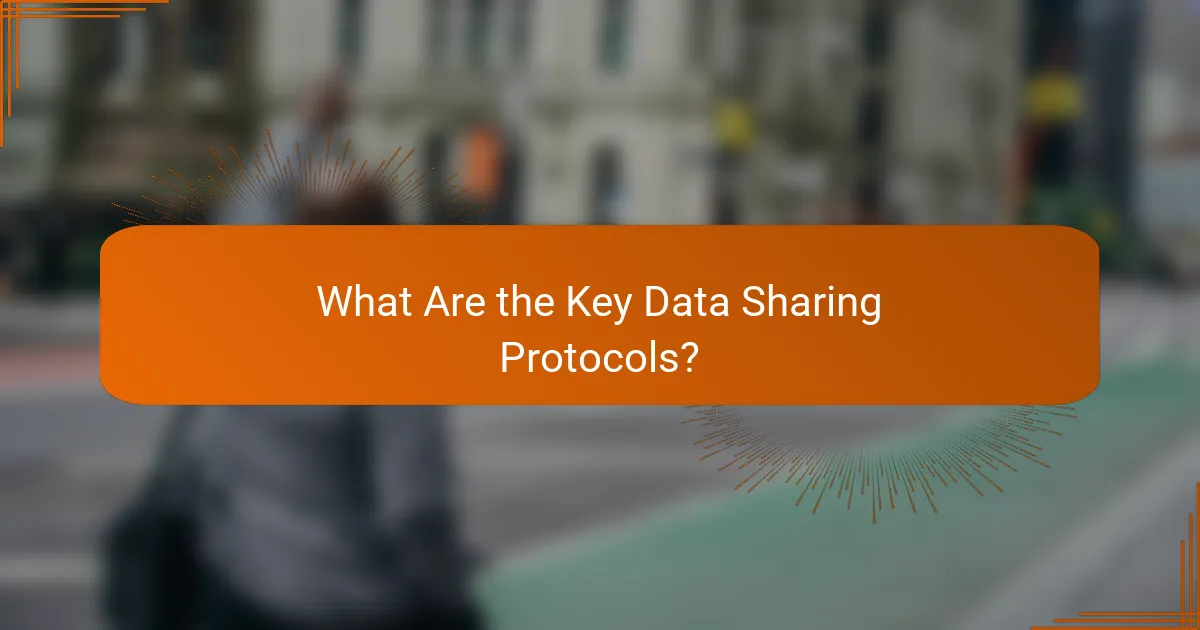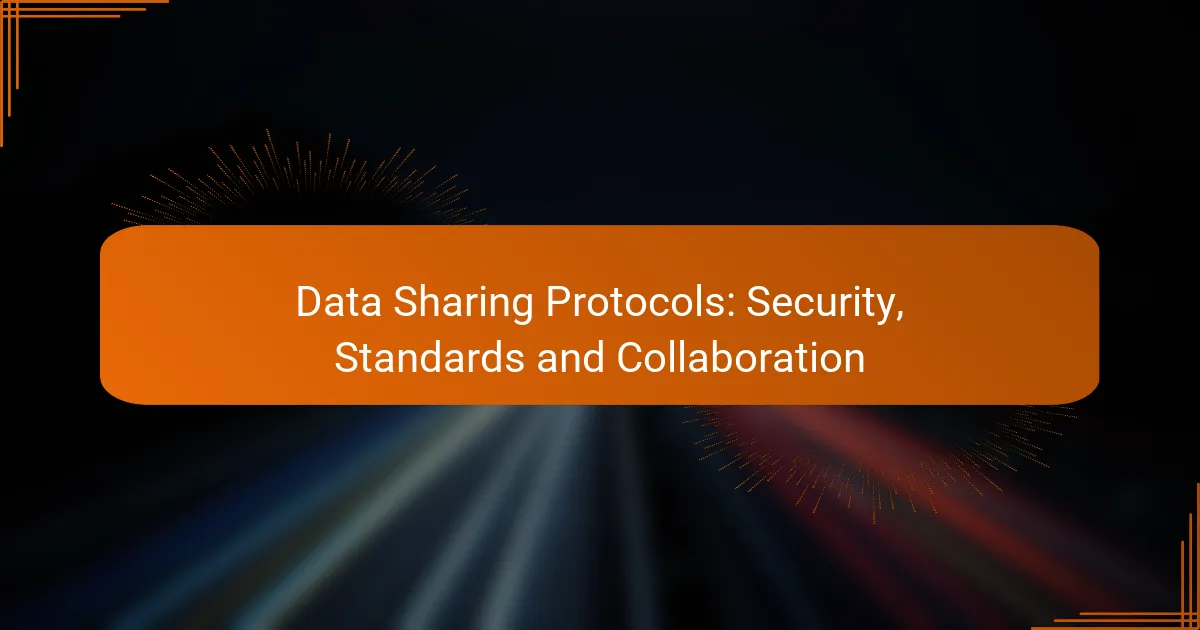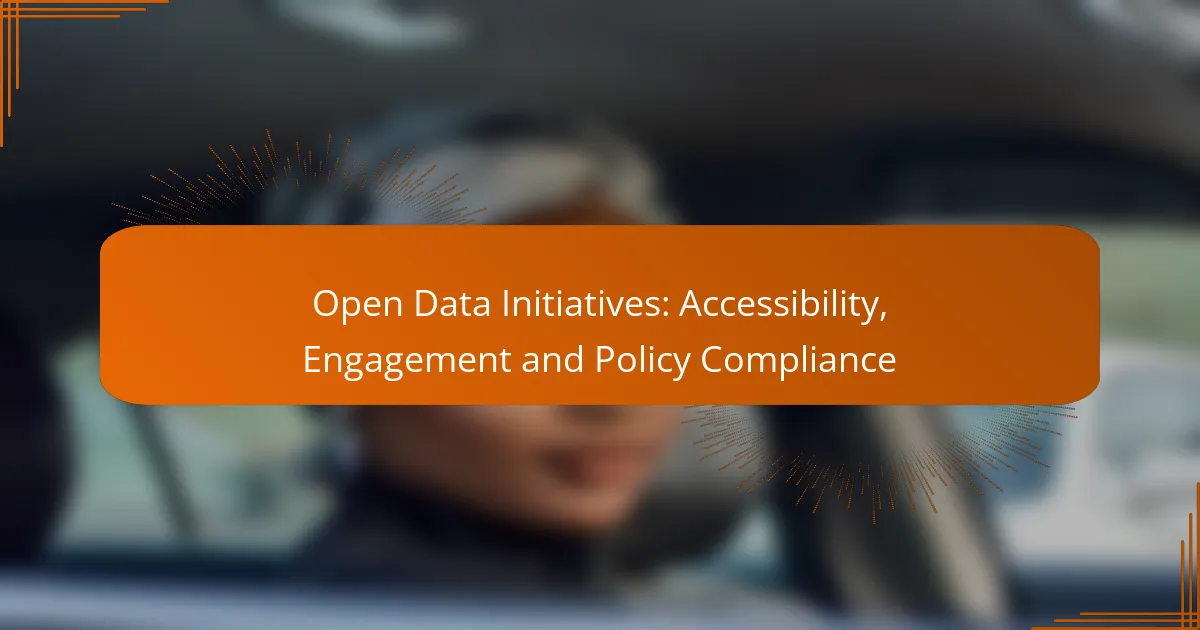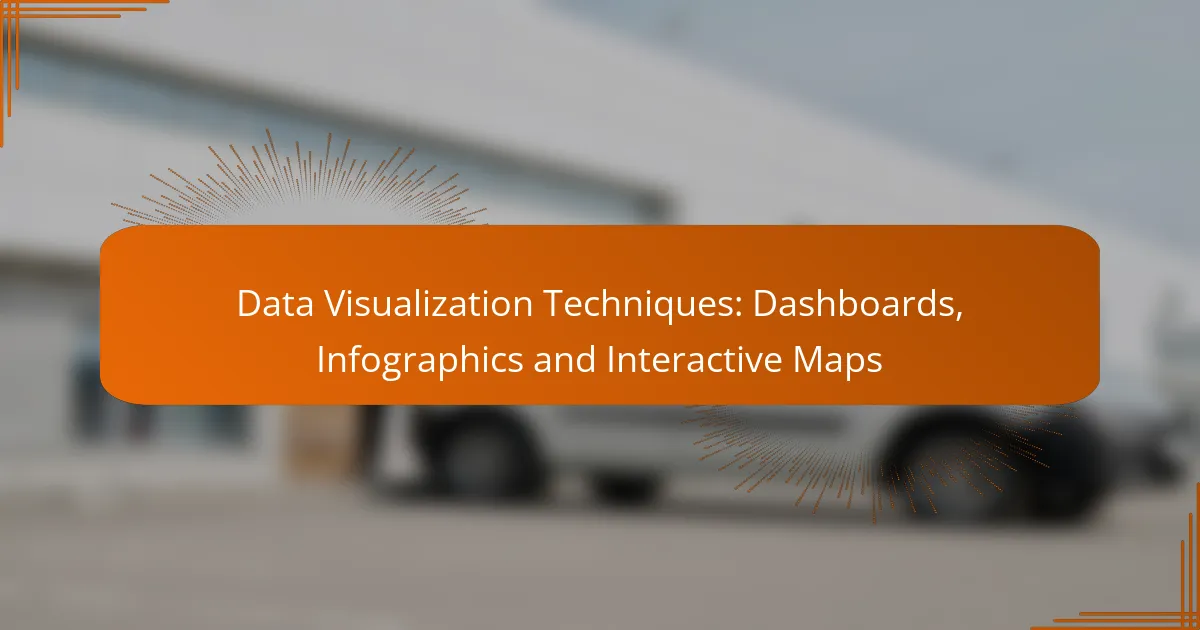Data sharing protocols are vital for securely and efficiently exchanging information between systems, defining the processes for data transmission, access, and management. By incorporating standardized security measures, these protocols protect sensitive information, ensuring data integrity and confidentiality while fostering trust in collaborative environments.

What Are the Key Data Sharing Protocols?
Data sharing protocols are essential frameworks that enable the secure and efficient exchange of information between systems. They define how data is transmitted, accessed, and managed, ensuring compatibility and security across different platforms.
Hypertext Transfer Protocol (HTTP)
HTTP is the foundational protocol for data communication on the web, allowing users to access web pages and resources. It operates on a request-response model, where a client sends a request to a server, which then responds with the requested data.
When using HTTP, consider implementing HTTPS for secure data transmission, as it encrypts the data exchanged between the client and server. This is crucial for protecting sensitive information, especially in e-commerce or online banking scenarios.
File Transfer Protocol (FTP)
FTP is a standard network protocol used to transfer files between a client and a server on a computer network. It allows users to upload, download, and manage files remotely, making it a popular choice for website maintenance and file sharing.
While FTP is widely used, it is important to note that it does not encrypt data by default. For secure file transfers, consider using FTPS or SFTP, which add layers of security to protect data during transmission.
Simple Object Access Protocol (SOAP)
SOAP is a protocol used for exchanging structured information in web services. It relies on XML for message format and typically uses HTTP or SMTP for message negotiation and transmission.
SOAP is highly extensible and supports complex operations, making it suitable for enterprise-level applications. However, its complexity can lead to increased overhead, so evaluate whether a simpler protocol like REST might meet your needs more effectively.
Representational State Transfer (REST)
REST is an architectural style that uses standard HTTP methods for communication, such as GET, POST, PUT, and DELETE. It is designed to be stateless, meaning each request from a client contains all the information needed to process it.
Because of its simplicity and scalability, REST has become the preferred choice for web services. It is particularly effective for mobile applications and microservices, allowing for quick and efficient data sharing.
Data Distribution Service (DDS)
DDS is a middleware protocol designed for real-time data exchange in distributed systems. It supports publish-subscribe communication, allowing data producers and consumers to interact without needing to know about each other directly.
This protocol is particularly useful in environments requiring high performance and low latency, such as IoT applications and financial trading systems. When implementing DDS, consider the quality of service settings to optimize data delivery based on your specific requirements.

How Do Data Sharing Protocols Enhance Security?
Data sharing protocols enhance security by establishing standardized methods for protecting sensitive information during transfer and storage. These protocols incorporate various security measures to ensure data integrity, confidentiality, and availability, which are crucial for maintaining trust in collaborative environments.
Encryption Standards
Encryption standards are essential for securing data in transit and at rest. Common standards include AES (Advanced Encryption Standard) and RSA (Rivest-Shamir-Adleman), which help protect data from unauthorized access. Implementing strong encryption practices can significantly reduce the risk of data breaches.
For effective encryption, consider using at least 256-bit keys for symmetric encryption and 2048-bit keys for asymmetric encryption. Regularly updating encryption methods in line with industry advancements is also critical to maintain security.
Access Control Mechanisms
Access control mechanisms determine who can view or use data within a system. Role-based access control (RBAC) is a popular method that assigns permissions based on user roles, ensuring that individuals only have access to the information necessary for their tasks.
Implementing the principle of least privilege is vital; users should have the minimum level of access required to perform their duties. Regular audits of access permissions can help identify and rectify any unnecessary access rights.
Authentication Protocols
Authentication protocols verify the identity of users before granting access to data. Common methods include multi-factor authentication (MFA) and OAuth, which add layers of security by requiring more than just a password for access.
To enhance security, organizations should adopt MFA wherever possible, as it significantly reduces the risk of unauthorized access. Additionally, keeping authentication methods updated and educating users about secure practices can further strengthen overall data security.

What Standards Govern Data Sharing Protocols?
Data sharing protocols are governed by various standards and regulations that ensure security, privacy, and compliance. Key standards include ISO/IEC 27001, GDPR, and HIPAA, each addressing different aspects of data protection and management.
ISO/IEC 27001
ISO/IEC 27001 is an international standard for information security management systems (ISMS). It provides a systematic approach to managing sensitive company information, ensuring its confidentiality, integrity, and availability.
Organizations seeking certification must assess risks, implement appropriate controls, and continuously monitor and improve their ISMS. This standard is applicable across various sectors, making it a versatile choice for businesses aiming to enhance their data security posture.
GDPR Compliance
The General Data Protection Regulation (GDPR) is a comprehensive data protection law in the European Union that governs how personal data is collected, processed, and stored. It emphasizes the rights of individuals and mandates strict consent requirements for data sharing.
To comply with GDPR, organizations must ensure transparency, allow individuals to access their data, and implement robust security measures. Non-compliance can result in significant fines, often reaching up to 4% of annual global turnover or €20 million, whichever is higher.
HIPAA Regulations
The Health Insurance Portability and Accountability Act (HIPAA) establishes standards for protecting sensitive patient information in the United States. It applies to healthcare providers, insurers, and any entity handling protected health information (PHI).
HIPAA requires covered entities to implement administrative, physical, and technical safeguards to ensure the confidentiality and security of PHI. Violations can lead to severe penalties, making compliance essential for healthcare organizations engaged in data sharing.

How to Choose the Right Data Sharing Protocol?
Selecting the right data sharing protocol involves evaluating security, performance, and compliance needs. A well-chosen protocol enhances data integrity while meeting organizational and regulatory requirements.
Assessing Security Needs
Security is paramount when choosing a data sharing protocol. Consider the sensitivity of the data being shared and the potential risks associated with unauthorized access. Protocols like HTTPS or SFTP offer encryption, which is crucial for protecting data in transit.
Evaluate the authentication methods supported by the protocol. Multi-factor authentication (MFA) can add an extra layer of security, making it harder for unauthorized users to gain access. Always prioritize protocols that provide robust security features aligned with your organization’s risk profile.
Evaluating Performance Requirements
Performance is a critical factor in data sharing protocols, especially when dealing with large datasets or real-time applications. Look for protocols that offer low latency and high throughput to ensure efficient data transfer. For instance, protocols like MQTT are designed for lightweight messaging and can be ideal for IoT applications.
Consider the scalability of the protocol as well. It should handle increased loads without significant degradation in performance. Testing the protocol under expected load conditions can help identify any potential bottlenecks before implementation.
Understanding Compliance Obligations
Compliance with data protection regulations is essential when selecting a data sharing protocol. Familiarize yourself with relevant laws such as GDPR in Europe or HIPAA in the United States, which dictate how data must be handled and shared.
Ensure that the chosen protocol supports compliance requirements, such as data encryption and access controls. Regular audits and assessments can help maintain compliance and identify any gaps in your data sharing practices.

What Are the Benefits of Collaboration in Data Sharing?
Collaboration in data sharing enhances the quality and utility of data, leading to more informed decisions and better outcomes. By pooling resources and expertise, organizations can achieve greater accuracy and efficiency in their data management practices.
Improved Data Accuracy
Collaborative data sharing allows organizations to cross-verify information, significantly enhancing data accuracy. When multiple entities contribute to a shared dataset, discrepancies can be identified and corrected more effectively, reducing errors that may arise from isolated data collection.
For instance, in healthcare, hospitals sharing patient data can ensure that medical records are consistent and up-to-date, leading to better patient care. This practice can also apply to industries like finance, where shared data can minimize reporting errors and compliance risks.
Enhanced Decision-Making
Collaboration in data sharing leads to improved decision-making by providing a more comprehensive view of the information landscape. When organizations share data, they can analyze trends and insights that would be difficult to discern from isolated datasets.
For example, a consortium of retailers sharing sales data can identify consumer behavior patterns, allowing them to adjust inventory and marketing strategies effectively. This collaborative approach not only speeds up the decision-making process but also increases the likelihood of successful outcomes.



